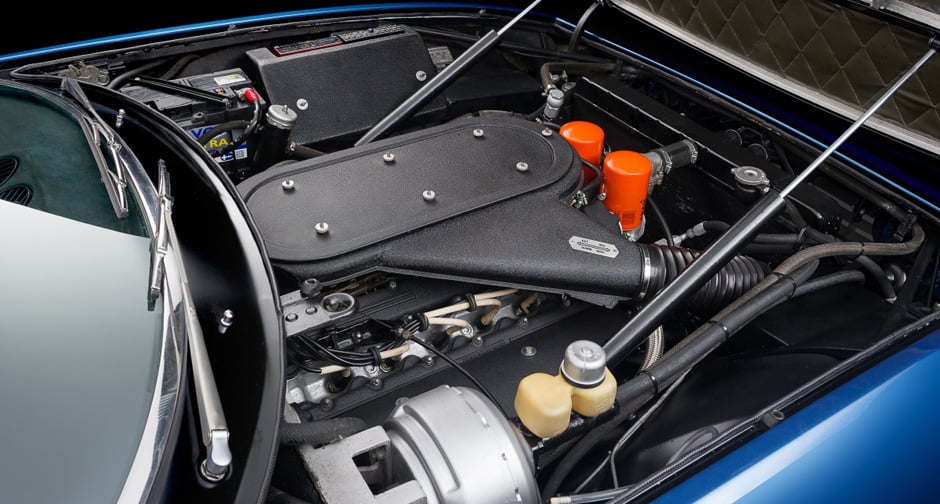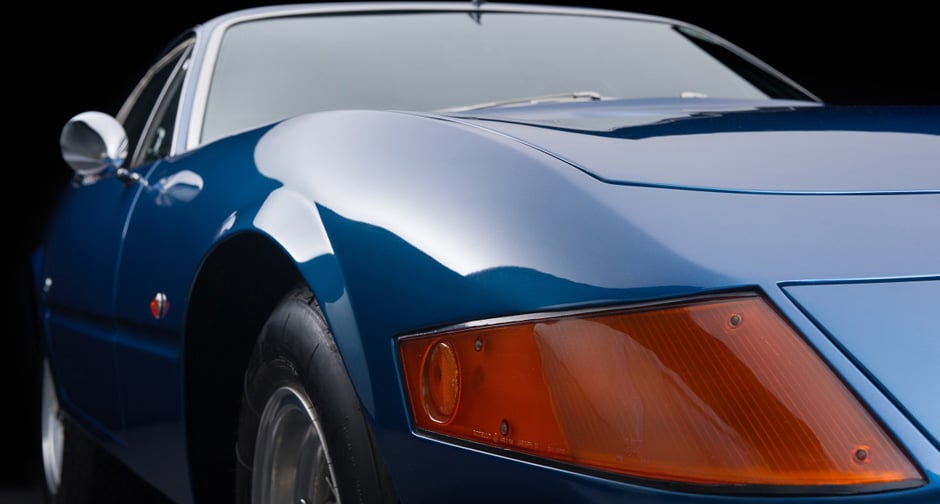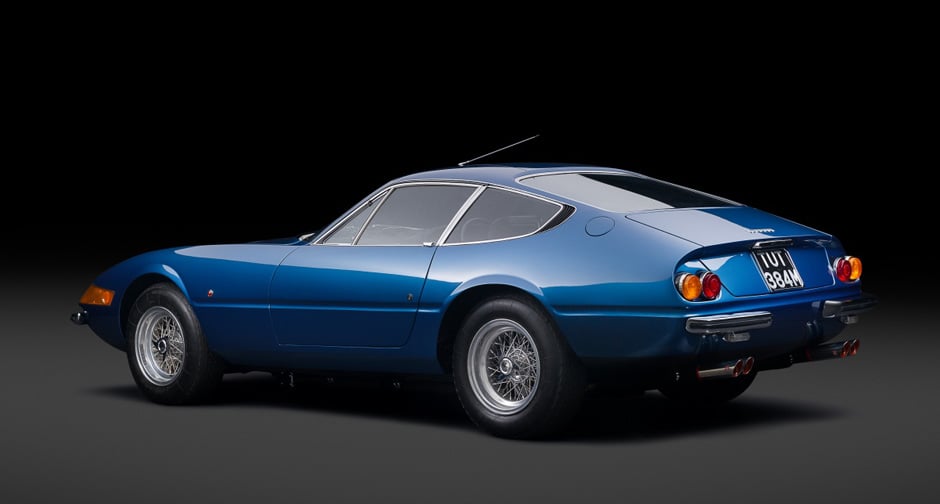Of course, ‘Daytona’ is merely a nickname – but it seems unlikely that Mr Rea would have sung about the car, had it always been known by its correct factory title. Just imagine him struggling to fit ‘365 GTB/4’ into the chorus (365 for the capacity of each cylinder, B for berlinetta and 4 for the number of camshafts).
Fortunately, in honour of Ferrari’s fabulous one-two-three finish in the 1967 Daytona 24 Hours (in Ferrari P series prototypes), the car became universally known by the nickname ‘Daytona’. But does the car deserve its legendary status?
Front-mounted V12 – a ‘proper’ Ferrari

Jonathan Kaiser of Hexagon Classics in South Kensington has no doubts whatsoever: “The Daytona has become one of the most desirable Ferraris of all time,” he says. “To most buyers it’s the pinnacle of its generation – the last of the great, V12 front-engined berlinettas. If you took all the badges off it and asked a passer-by ‘What is it?’ – they’d instantly say ‘a Ferrari’.”
Looking at the 1973 example pictured here – currently on sale from Edward Lovett – it’s hard to disagree. As Lovett himself says, “It’s one of the most iconic cars of the 70s, with landmark performance, from undoubtedly the most desirable manufacturer. The Daytona is a true gentleman’s European Grand Tourer.”
Under-bonnet symphony

When it comes to performance, the Daytona is hard to beat, the vast torque from its 4.4-litre engine allowing almost effortless 150mph cruising; and of course the car is famous for its handling and balance. But this is no Ferrari for softies… part of the car’s charm is the driver’s physical involvement. Don’t expect power steering, for example. “Yes, it is a ‘macho’ car to drive,” agrees Jonathan Kaiser, “but once on the move it doesn’t feel so heavy – it comes alive and there really isn’t a problem. And just listen to that engine: it sounds like a complete symphony orchestra singing away under the bonnet.”
"I’m convinced that within five years, the best Daytonas will be going for over a million"
Although it was never officially raced by Ferrari, a number of privateer teams found the Daytona ideal for the track, as Jonathan explains. “When the new 365 GTB/4 was first unveiled at the Paris Auto Salon in 1968, it was the most expensive and fastest road-going Ferrari ever built. All that brute power worked particularly well at Le Mans, and the car’s dry sump was a great bonus.”
Investment potential

There are currently several Daytonas for sale in the Classic Driver Market, including the pictured car from Edward Lovett and a 1972 model at Hexagon Classics, which Jonathan describes as in ‘concours’ condition. But do they represent a good investment?
“Ask yourself, how many Daytonas are there out there in top condition, with matching numbers and the correct documentation? Very few,” states Jonathan. “I’m convinced that within five years, the best Daytonas will be going for over a million. Right now, they are totally undervalued: the Daytona is the next million-pound Ferrari, I’m sure of it.”
Photos: Tim Scott, courtesy of Edward Lovett















